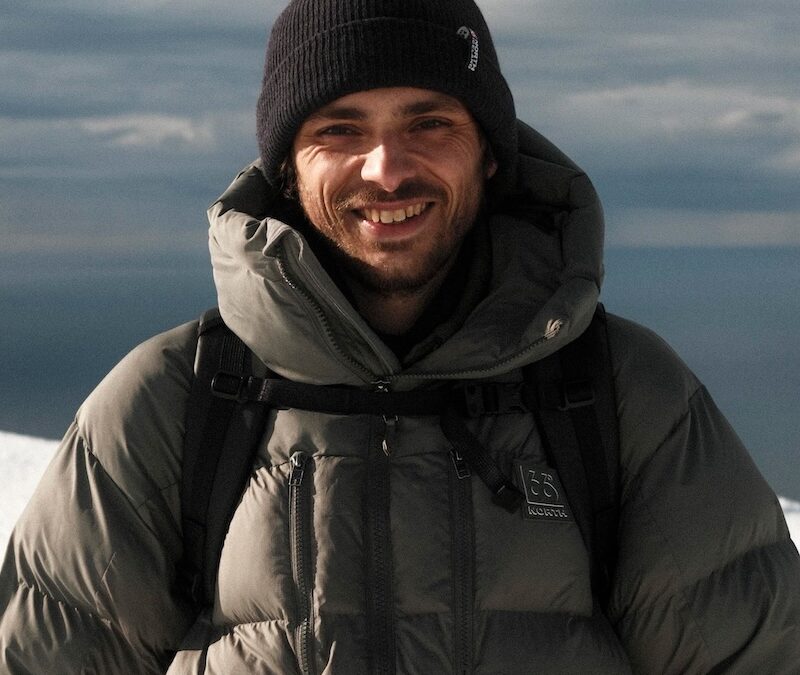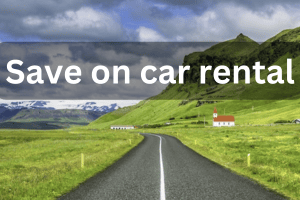Free and exclusive discount codes for hundreds of tours and & travel services in Iceland
Subscribe to instantly receive discount codes for tours, car rental, camper van rental, and outdoor clothing rental. Thank you! ❤️ Jon Heidar, Editor of Stuck in Iceland Travel MagazineI noticed the super-talented Reykjavik-based French photographer Kévin Pagès for three reasons: He captured unbelievable drone footage of a man walking right to the top of an erupting crater on the Reykjanes peninsula in 2024. It is safe to say that this gentleman was putting himself forward as an entrant to the Darwin Awards. Secondly, Kévin recently introduced me to his unique contoured 3D-printed wall posters. These display his impressive photographs of Icelandic nature. Thirdly, Kévin graciously shared his brand-new e-book about the Icelandic highlands.
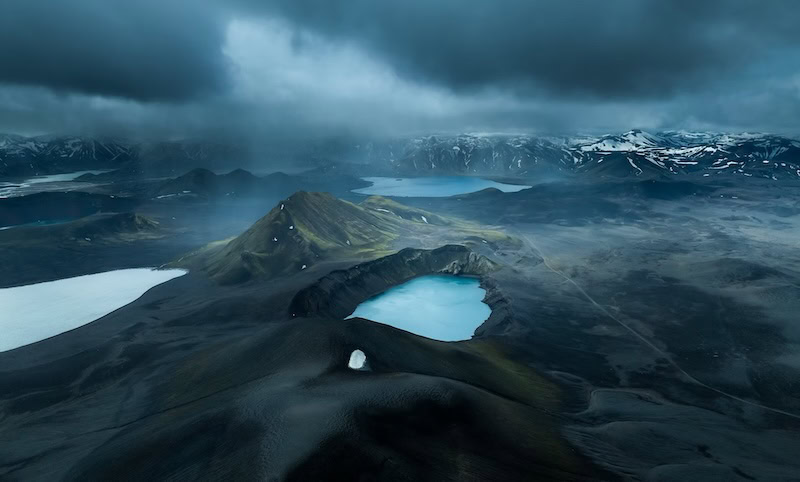
Photographer Kévin Pagès is a man of many talents, with many hats
Kévin has carved out a unique space in the visual storytelling world by blending fashion, advertising, and fine art photography with Iceland’s epic backdrops. He’s a sought-after visual artist and a co-founder of Arctic Journeys, a tour company offering immersive photo adventures in Iceland’s most awe-inspiring places.
In this exclusive interview for Stuck in Iceland Travel Magazine, I chat with Kévin about life as a foreign creative in Iceland, the power of light in photography, and how he balances commercial work with his love for the land. Whether you dream of visiting Iceland or love powerful visual storytelling, this conversation will inspire you—and maybe reach for your camera.
Hey Kévin, thank you for taking the time to do this interview. What brought you to Iceland initially, and how did you decide to stay?
After graduating with a degree in Art when I was 20, I decided to take a year off and go to New Zealand. I needed to be far from everything to learn how to live on my own, force myself to speak English, and, most importantly, to learn about myself. I brought a sketchbook to draw and paint during the trip, and also packed a cheap Olympus point-and-shoot camera. That little camera ended up changing everything. I became passionate about photography almost by accident.
When I returned to France, I already had the urge to leave again, but at the time, my ex-girlfriend was finishing her bachelor’s degree in Art and had two years left. So I stayed, found a job as a receptionist in a five-star hotel, and continued developing my interest in photography. I bought an Olympus film camera and found everything I needed at a flea market to build a small darkroom at home. I fell in love with the process, shooting, developing, and printing.
After those two years, we decided to move to Montréal so that she could begin a master’s degree. Since she was going to study, I figured I should too, and I applied and got accepted into a college program in photography. It was in Montréal, in the middle of my studies, that I watched The Secret Life of Walter Mitty, and it sparked something in me. I organized a summer trip with a few friends from school and my ex, and we spent 12 days traveling around Iceland, including parts of the highlands. I completely fell in love with the country.
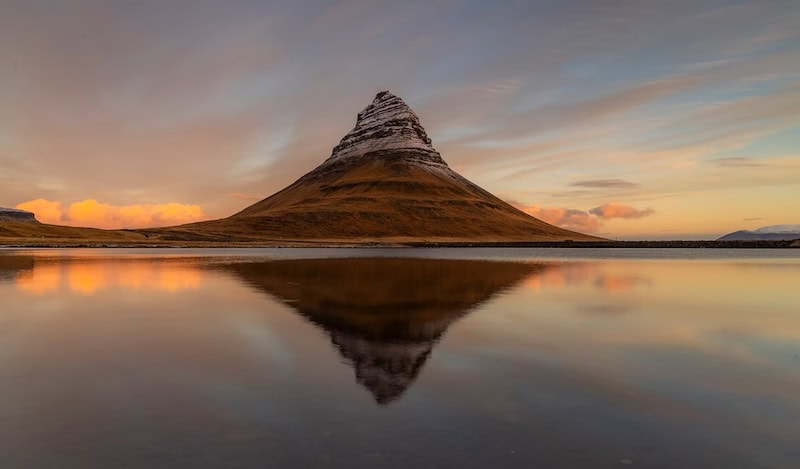
Winning the Sony Emerging Photographer of the Year
Back in Montréal, we decided we’d try to save up and move to Iceland one day. In the meantime, I returned in 2017 to shoot a personal fashion photography project. That project won me the Sony Emerging Photographer of the Year award (2016–2017), which was a huge confidence boost. Two months after officially moving to Iceland in 2018, I won another competition, this time with the lighting brand Broncolor, which led to me becoming one of their ambassadors for two years.
Moving to Iceland as a foreigner, not knowing the language or anyone here, with big dreams, was anything but easy, and it is still a work in progress after 7 years. I worked various jobs in restaurants and gift shops to make ends meet. But every moment I had off, I dedicated myself to building my career, meeting people, taking on small photography jobs, creating personal work, and most importantly, exploring the island as much as possible.
Over the years, I’ve had the chance to work on various commercial and fashion projects as well as some weddings, and I began developing my skills in aerial photography, which became a major part of my artistic identity. In 2021, I started guiding photography workshops and loved it. That side of my work quickly grew and eventually became close to a full-time job. It was the perfect way to combine earning a living with sharing my passion and being outside in nature.
So, together with a good friend of mine and fellow photographer, Dani Guindo, we founded Arctic Journeys, a photo-focused day tour company. It’s been a natural evolution of everything I’ve done up to now, and I feel incredibly lucky to call this place home.
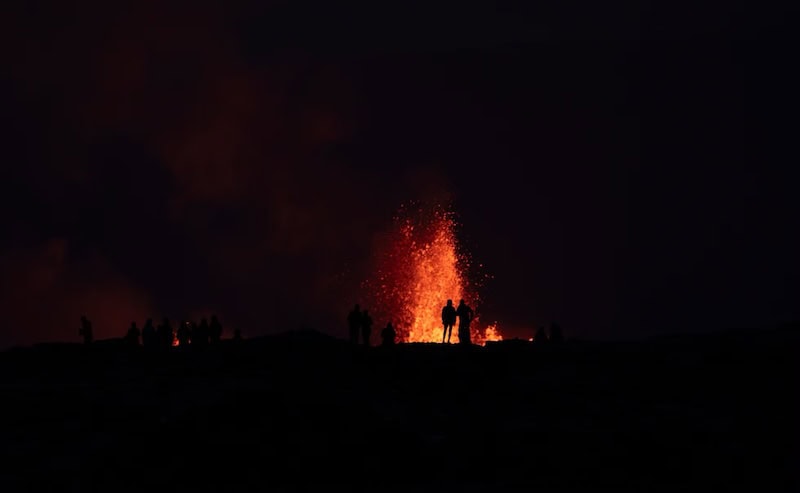
Can you tell me when you caught the lone wanderer, almost at the top of the eruption at Reykjanes?
I was at the eruption site, parked in one of the designated areas where flying drones were still allowed. Like many others, I was there to capture the power of the moment. As I flew my drone toward the main crater, I noticed something strange, something very small that didn’t seem to belong in the landscape. As I got closer, I realized it was a person, clearly a tourist, standing right at the edge of the active crater.
To get there, he must have walked more than a kilometre across freshly dried lava. And when I say “dried,” I mean just the thin surface layer; there was still molten lava flowing underneath in most parts, with extreme heat rising from the cracks. I was shocked. It was hard to believe someone would risk so much just to get closer. But more than anything, I was worried for him.
>I flew my drone closer, trying to communicate by moving it in a way that might signal danger, basically trying to tell him to get out of there. That’s when he looked at the drone, smiled, and waved at the camera as if nothing was wrong. Eventually, I think he got the message and began making his way back. While keeping an eye on him, I called the Reykjanesbær police to report the situation. But their response was: “Is he asking for help?” I said no. Their answer: “Then we won’t do anything.” I told them he was clearly in danger, to which they replied, “Oh well… tourists do all sorts of crazy things in Iceland.”
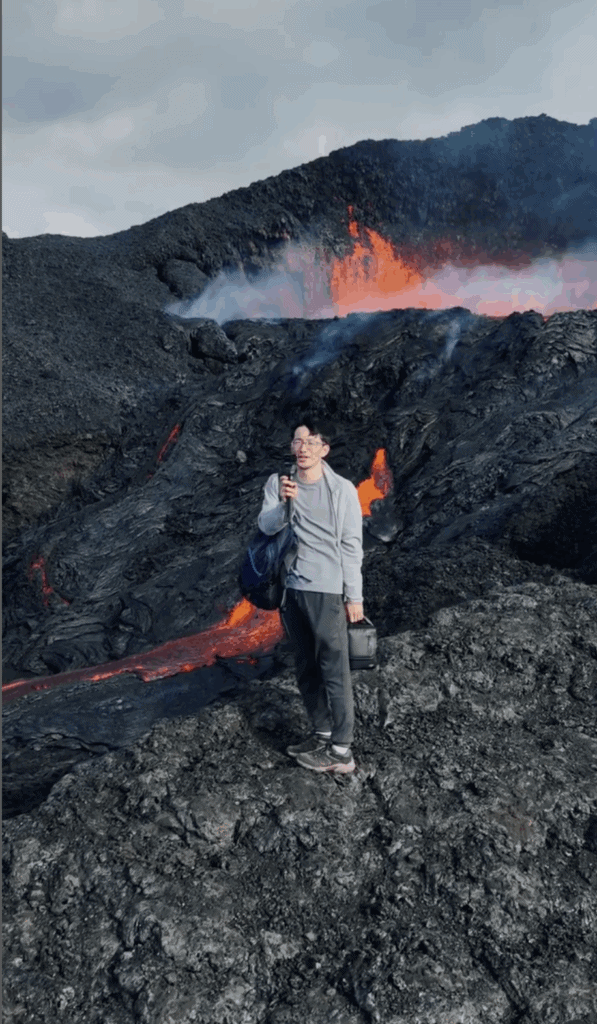
Fate unknown
It was disappointing, but sadly not surprising. I kept following him with the drone as he walked back, scared I might end up recording something tragic. At one point, he did fall; he broke through a thin crust of lava and seemed to injure himself, but luckily for him, it wasn’t deep. He started hopping on one foot while holding the other, and I knew he had hurt himself. I stayed with him as long as possible, but eventually I had to return the drone because the battery was running out. I never found out what happened to him.
By that time, authorities had just started allowing limited access to designated parking areas so people could experience the eruption safely. Unfortunately, it wasn’t the first time someone did something reckless at an eruption site since 2021. And the frustrating thing is, it only takes one or two people like that to ruin the experience for thousands of others.
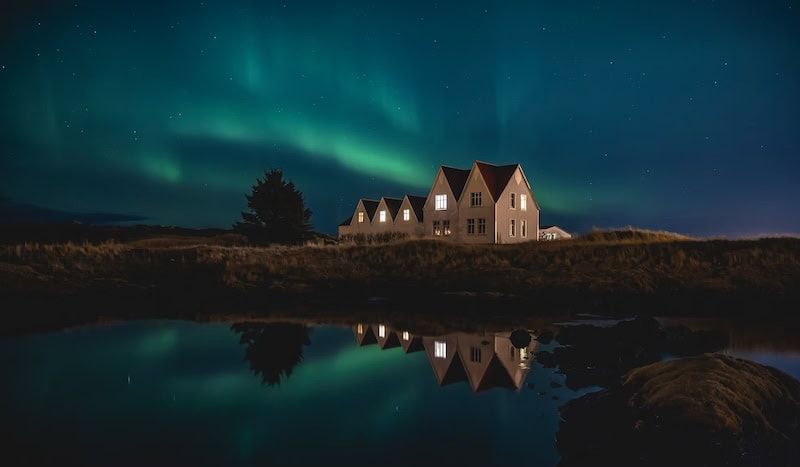
Thank you for sharing your e-book on the Icelandic highlands with me. It is pretty great. Tell me more about the process of writing the book
Thanks, I’m glad you liked it. The e-book came from a desire to share more than just photos. I’ve spent a lot of time exploring the highlands over the years, and those places really shaped my connection to Iceland. I wanted to create something personal, something that would feel like a mix between a visual journal and a travel companion.
The images are all from past trips, collected over time. I didn’t go out and shoot anything specific for the book. I just went through my archives and selected the most meaningful moments. Some places are pretty remote, some a little more known, but they all have something in common: they left a mark on me.
I worked on it mainly during the winter, when things slow down a bit and I can focus on projects like this. My writing method was the same as when I was a guide there. I talk about the highlands when I’m guiding, sharing little stories, impressions, practical tips, coordinates… whatever feels honest and useful. I didn’t want it to be just a catalogue of nice landscapes. It’s more about the experience of moving through those spaces slowly, with curiosity and respect.
I am impressed with your 3D prints of Icelandic nature. Please explain to my readers what inspired you to 3D print your work and how the process works.
The more I got into capturing landscapes more abstractly and artistically, the more I wondered if there was technology out there that could print my work with actual reliefs. I wanted something that would turn a flat image into a fully immersive, tactile experience. I wanted people not only to see the landscapes but to feel them, too.
Then, in early 2024, I was contacted by a Polish-based company called LEO Art. They had spent the last two years developing exactly that kind of technology. They asked me to be one of their launch photographers. Naturally, I was excited and curious, so I signed an agreement with them and flew to Warsaw in February for the official launch event.
When I saw the prints for the first time, I was blown away. It couldn’t have been closer to what I had imagined; they brought my aerial photography to life in a way I’d never seen before. At first, the concept was focused on large-format framed prints, which looked stunning, but after a few months, I thought it would be great to offer smaller, more accessible formats as well. LEO Art worked on new options, and I’m really happy with the outcome. The prints are now available in different sizes and materials, so more people can experience them.
Hopefully, this is just the beginning of a long adventure, bringing nature into people’s homes in a way that’s not just visual, but also tactile and deeply engaging.
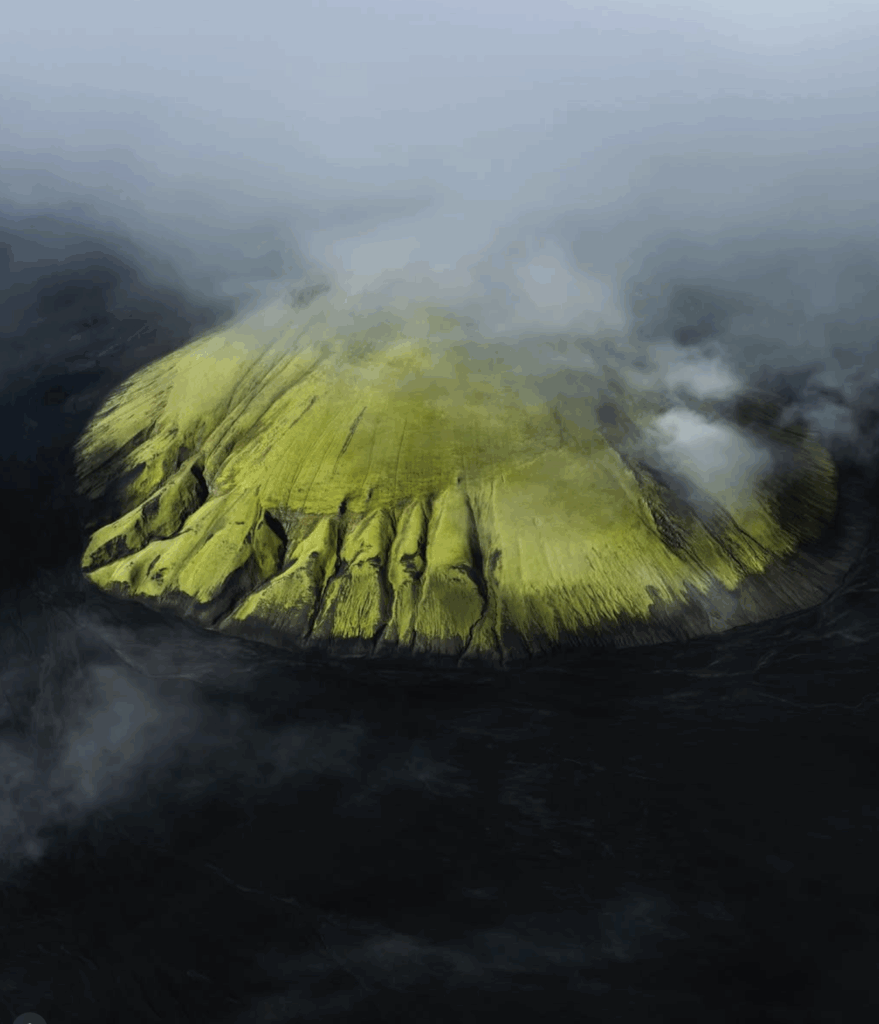
How do you balance client work with your creative projects?
It’s definitely a balance I’m still learning to manage. Early on, client work was essential. I took whatever jobs I could get to survive while slowly building my portfolio and name here in Iceland. Over time, the commercial side grew, and I had the chance to work on some great fashion and editorial projects. But deep down, my creative projects have always been what drives me most. That’s where I feel the most freedom, and where I really explore new ideas.
The challenge is time. When you’re freelancing, it’s easy to fall into survival mode, taking on back-to-back client jobs and leaving no space for your own work. But I’ve learned to carve out time intentionally for personal projects, even if it means turning down some paid work. Those personal projects often open unexpected doors anyway.
In the last few years, guiding photo workshops has become a big part of my work. It bridges both worlds. Through Arctic Journeys and tours I guide for other companies, I get to earn a living while sharing what I love most, being outside, chasing light, and helping people connect with the landscape through photography. It keeps me inspired, and it keeps me grounded.
What’s one location in Iceland that never fails to inspire you?
If I had to pick just one, it would be Mælifell. There’s something about that mountain that never gets old. No matter how many times I’ve been there, it always feels like the first time. It rises out of the black sand like something from a dream. This is especially true after the rain when the moss turns that deep, surreal green. It’s so isolated, so perfectly shaped, it feels almost unreal, like it was designed rather than formed naturally.
What I love most is the silence around it. There’s no phone signal, no people, just the wind, the textures, and this overwhelming sense of scale. It’s the kind of place that makes you feel small in the best possible way. Every time I go, I shoot something completely different depending on the day’s light and mood.
Mælifell isn’t always easy to reach. This is especially true early or late in the season. However, that’s part of what makes it special. It demands time, patience, and respect. But once you’re there, the reward feels bigger than just a photo. It’s an experience. I talk more about it in my e-book on the Icelandic Highlands. It also has a few stories and images I’ve captured there over the years.
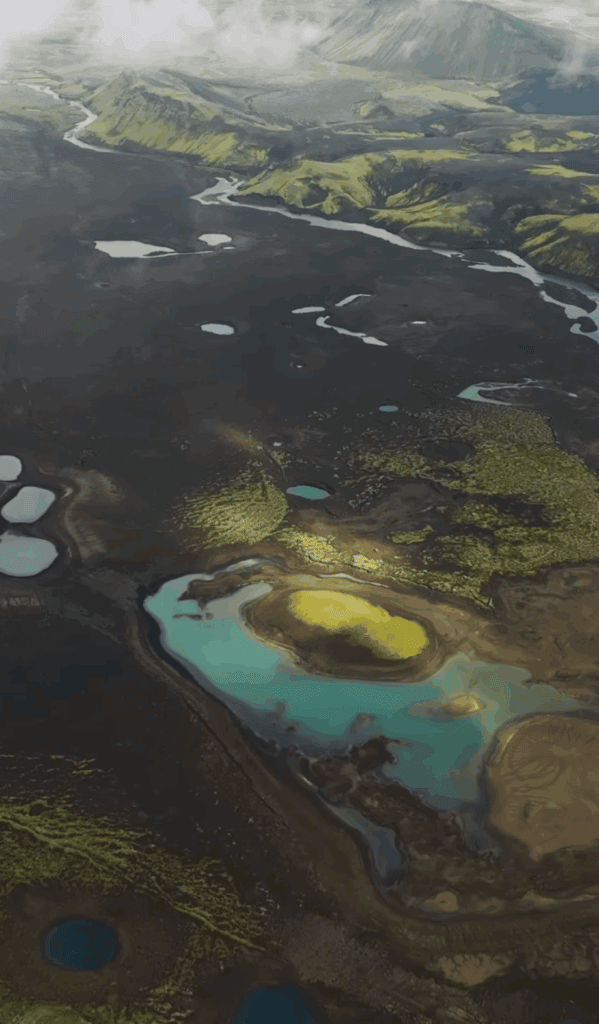
What are your favorite places and activities in Iceland?
For me, it always comes back to being in the Icelandic highlands. That’s where I feel most alive. I love being far from everything, no noise, no distractions, just nature at its most raw. Whether hiking, exploring new tracks, or flying my drone to get a different perspective, that’s when I’m fully in the moment.
The highlands are never the same twice. The light changes constantly, the weather is unpredictable, and even places I’ve visited many times still surprise me. There’s a real sense of adventure out there. It’s one of the few places where I can slow down, breathe, and just let myself be present, with or without a camera.
That’s definitely my favorite way to spend time here, and I try to go as often as the conditions allow.
Any tips for travelers wanting to capture Iceland through their lens?
I think the best advice I can give is to slow down. Many people come to Iceland with a checklist of locations. They rush from one to the next. But this country rewards patience. Take the time to feel the place, not just photograph it. Some of the most beautiful moments happen when you’re standing still. Wait for the light to shift or the clouds to clear.
The weather here changes constantly. You must learn to work with it, not against it. Don’t be afraid of fog, wind, or rain. They can create some of the most atmospheric images if you embrace them.
From a technical point of view, always protect your gear (and bring backups if you can). Batteries drain fast in the cold. Lenses fog up quickly from the cold and humid outside to your warm car. If you have a drone, understand the local rules and fly responsibly.
But above all, respect the land. Stay on marked paths, don’t disturb the moss, and remember that nature always comes first. If you approach Iceland with care and curiosity, your photos will naturally reflect that.
If you expected to see an eruption but didn’t make it on time, it’s a good idea to visit the Lava Show*. Even if you could see an eruption, you wouldn’t be able to be as close to molten lava as you would be at the Lava Show. Furthermore, you wouldn’t learn as much about volcanology and geology in Iceland.
* Disclosure from the editor: I am Lava Show’s Sales and Marketing Manager. We resell Kevin’s 3D prints in our gift shop.


